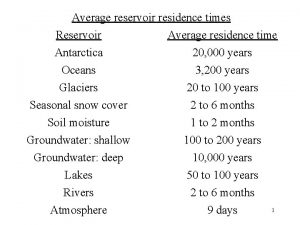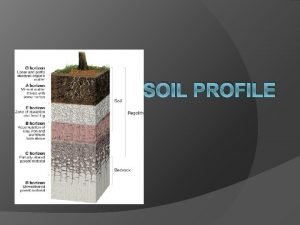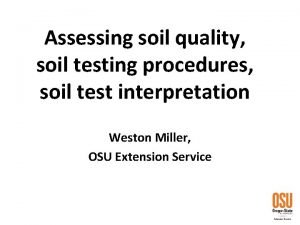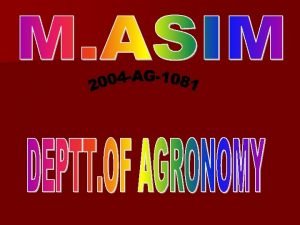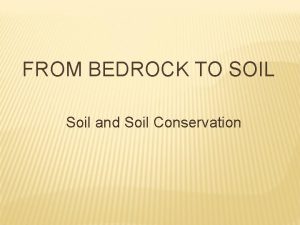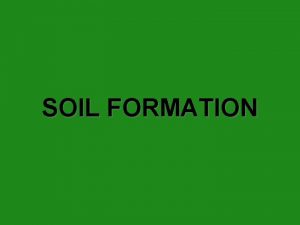Soil C Residence Times Calculate residence times of













- Slides: 13


Soil C Residence Times • Calculate residence times of C pools in previous figure. Measure of response time to perturbations. • Table below shows approximate average range vs climate:

Soil Carbon in Global Perspective • Two main anthropogenic C inputs are form fossil fuel and soil/plants • Main C sinks are atmosphere, oceans and (? ? ? ) ecosystems

Effect of Cultivation on Soil C Storage Inputs: • can increase or decrease depending on cultural practices Losses/loss rate: • almost always increase due to: – disruption of aggregates which releases physically protected C to microbes – increases in soil temperature (increasing surface albedo) – increase physical erosion which may more rapidly oxide soil C Soil C storage vs. population:





Paired plot (left) and time series (below) analyses of soil C vs. cultivation. Apparent gains in soils of low original C may be due to enhanced inputs by irrigation, etc.

Soil C Trends with Time (natural and after cultivation: models At start of cultivation:

Can Soil C be Restored Under Improved Ag Practices: major UN/Kyoto issue Approaches: • Reduce/eliminate tillage which allows C to be stored in soil structure and away from microbes • Major possibility for USA in Great Plains • Minimum tillage reduces ka in previous diagram back toward original value (and soil C increases) • Return marginal lands to native vegetation • Important also in Great Plains • Again, k changes and soil C rebuilds (rate is dependent on many things, including climate, N availability, etc). • Better manage grazing lands, establish agro-forestry in tropics etc.

Limitations to Agricultural Storage of CO 2 • Rate is likely to be originally high, but should rapidly decline on decadal time scales. • Total potential storage in all cultivated soils is about 70 Gt, which = about 12 years of fossil fuel burning • Restored C can be easily and rapidly lost through changes in land management (back to plowing, etc. ).

 Living soil vs dead soil
Living soil vs dead soil What are the four spheres of the earth
What are the four spheres of the earth 15 times 15 times 20
15 times 15 times 20 Mean residence time
Mean residence time Vsu centennial hall
Vsu centennial hall Entrepreneur work visa points scale
Entrepreneur work visa points scale List of insurance mjhs accepts
List of insurance mjhs accepts University hall canterbury
University hall canterbury Residence life saint leo
Residence life saint leo Residence ete pape
Residence ete pape Bielany residence
Bielany residence Spain permanent residence by investment
Spain permanent residence by investment Mampang residence depok
Mampang residence depok Around the world, the most common residence pattern is
Around the world, the most common residence pattern is
















